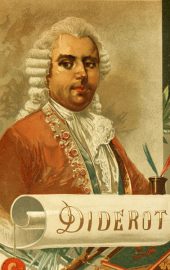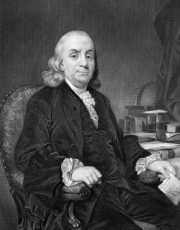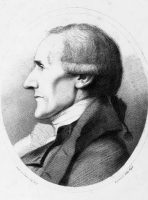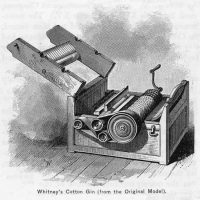1700 This was the Era of Enlightenment, during which sugar plantations were sending 50,000 barrels of sugar to Europe each year, and about 30,000 Africans were enslaved annually by 1700 AD ( 8 out of 10 crossed the Atlantic). Art depicted black females as very fat, lowly, little, and foul. 200 years of being told that a round belly is a symptom of a corrupt soul and slow wit led men to internalize this belief and they started to project it onto women. Women were allowed to have more participation in church activities and thus were being held to higher moral standards, like men were in the century before. No longer was the curvy, voluptuous woman a male desire. It was more important to be austere and conform to the ascetic aesthetic of the male views. Beauty became synonymous with morality, as aesthetic ideals were redefined to include a thin female frame and with these changing perceptions, shaming women for their bodies followed. The misinformation about black people being lazy, greedy, and hyper-sexualized had evolved into the religious ideology as indulgent, gluttonous, fat, idle, and dumb witted. The enslavement of Africans and Indigenous peoples trade by England and France increased significantly.
There was mass immigration from Ireland, Scotland, and France to the American colonies, generally either as punishment per British decree or to seek a more affordable life. American white people began delineating superiority based on the shade of whiteness and which country one came from.
1707 Scottish peoples immigrated to America after the passage of the Acts Of Union between England and Scotland, which unified the countries into the United Kingdom of Great Britain. Many lowland laborers and artisans became indentured servants for tobacco colonies in New York.
1709 Germans settled in Pennsylvania due to French wars with King Louis XIV.
1710 The rifle was invented in America.
1711 The Spectator, a daily newspaper on morality and etiquette aimed toward men, was created. Think of this as the first advice column. Men would write about their personal struggles surrounding abstaining from food and the impact on their weight, as well as complain about other fat people, especially fat women. Their own internalized body shame, particularly for their bellies, was projected on women and they began to ridicule women’s bodies, calling them big-bellied and bloated. This quickly became a worry for women in high society whose worth was contingent upon their beauty and whom they married. To ensure they were seen as desirous and austere, women began seeking help from physicians.
1712 The Steam Engine was invented by Thomas Newcomen.
1717 The English Parliament legalized the exportation of people to America as punishment.
1730s There was an influx of German and Scotch Irish immigrants to New England looking for cheaper costs of living.
1730 George Cheyne, a popular physician amongst females in high society, would give food advice similar to what white males had been recommended to do. His recommendations included drinking cow-hey all day, regular fasting, and purging. His intention was not to make them skinny, but to prevent their souls from being contaminated by impure quality of food. Anything that could connect women to being perceived as indulgent and therefore gluttonous, was rejected, including having fat on a woman’s frame.
1733 The spinning machine for weaving fabric initiated the automation of the textile industry.
1740 The English Parliament passed the Naturalization Act in an effort to tempt Jews to immigrate to America.
1746 Puritan and physician Thomas Muffet had died almost 150 years prior in 1604, but it was not until 1746 that his unfinished book was edited and published. It was entitled Health Improvement, or, Rules comprizing and discovering the nature, method and manner of preparing all sorts of foods used in this nation. This book turned out to be an early ‘how-to’ manual for disordered eating and was the template adopted by diet books for centuries to come. It consisted of 400 pages of delicious recipes interspersed with lengthy diatribes that shamed readers and described why they should suppress their appetites for fear of “digging their graves with their teeth” because “the wisest Soul dwelleth in the most empty body.”
1749 Buffon’s Natural History was published and asserted that all races have one source, offspring share a set of traits, and that’s how different races can be discerned. Differences are discerned first by skin color, then by body size and shape. He stated that the existing black people of Europe (Moors) were part of the race of whites because they differed from Africans whom he described as “tall, plump, simple and stupid.”
1750 Denis Diderot published the first Encyclopedia which summarized the general assumptions about Africans at the time: “The [slaves] of Cap Verd … or Senegalese, are regarded as the most attractive in all of Africa.… The coast of Angola, the kingdoms of Loango and the Congo produce an abundance of attractive nègres.… Their penchant for pleasure makes them fairly unfit for hard labor, since they are generally lazy, cowardly, and very fond of gluttony. The least esteemed of all the nègres are the Bambaras; their uncleanliness, as well as the large scars that they give themselves across their cheeks from the nose to the ears, make them hideous. They are lazy, drunken, gluttonous, and apt to steal” (as cited in Strings, 2019).
Diderot was part of a growing sect of Atheists who viewed rationalism above religious ideology. Yet, the vernacular and opinions amongst these atheists remained rooted in the Puritan and Catholic ideas about food and body morality. Same story, new name.
1750s In England, new inventions sparked the beginnings of the Industrial Revolution. For example, the spinning jenny and the power loom made weaving textiles and cloth production faster and cheaper. The American colonies were expanding and with this the demand for textiles. Other industrial innovations were in the steel and iron industries. Seemingly overnight, factories sprung up creating jobs. The rural locations of factories quickly became cities, with little to no city planning and no clean water.
1751 “Why should Pennsylvania, founded by the English, become a Colony of Aliens, who will shortly be so numerous as to Germanize us instead of our Anglifying them, and will never adopt our Language or Customs, any more than they can acquire our Complexion. Which leads me to add one Remark: That the Number of purely white People in the World is proportionally very small … in Europe, the Spaniards, Italians, French, Russians and Swedes, are generally of what we call a swarthy Complexion; as are the Germans also … And while we are, as I may call it, Scouring our Planet, by clearing America of Woods, and so making this Side of our Globe reflect a brighter Light to the Eyes of Inhabitants in Mars or Venus, why should we in the Sight of Superior Beings, darken its People? Why increase the Sons of Africa, by Planting them in America, where we have so fair an Opportunity, by excluding all Blacks and Tawneys, of increasing the lovely White and Red? But perhaps I am partial to the Complexion of my Country, for such Kind of Partiality is natural to Mankind.” (Franklin, Benjamin, 1751).
1752 Benjamin Franklin created the lightning conductor.
1753 “[Germans] who come hither are generally of the most ignorant Stupid Sort of their own Nation. Few of their children in the Country learn English … the Signs in our Streets have inscriptions in both languages, and in some places only German … I suppose in a few years they [interpreters] will be also necessary in the Assembly, to tell one half of our Legislators what the other half say … they will soon so out number us, that all the advantages we have will not in My Opinion be able to preserve our language, and even our Government will become precarious.” (Franklin, Benjamin, 1753).
1754 The French and Indian War occurred in North America. Sir Jeffrey Amherst, of the British army, introduced the first known examples of biological warfare when he encouraged smallpox introduction to the Native Peoples, who had sided with the French in America. Smallpox had been around for centuries, and was thought to be one of the primary diseases that killed people as travel expanded after the fall of the Roman Empire, although smallpox, in reality, had been around much longer than that and occurred in most European, Asian, and African continents.
1755 The French Canadians, who were expelled from Nova Scotia on suspicion of disloyalty, eventually settled in Louisiana.
1760 Medicine started to become a regulated field of practice by professional societies. Up until this point, people were buying remedies from performing salesmen (similar to the medicine shows in North America) clergymen, and doctors who may, or may not, have been trained properly, if at all.
1763 Royal Proclamation of 1763. The English monarchy recognized pre-existing sovereignty of Indian tribes in North America and proclaimed their aboriginal rights to land, which could not be disturbed unless the tribes ceded or sold to the English crown.
1768 Carbonated water-the first fizzy drink was invented by Joseph Priestly.
1770 The London stock exchange was established and American Patriots were complaining that Britain’s taxation of the colonies without consent was akin to treating them like captive Africans. The slogan “Taxation without Representation” resonated with the colonials, as it was commonplace in all 13 colonies for white people to hold African and Indigenous people captive. It helped to change colonial mindsets in favor of a revolution. The slogan and the cultural belief behind it confirmed white supremacist ideas for some and sparked a small but growing discontent over the injustice towards enslaved peoples.
1775 The American Revolution began. In order to fund the war, speculative land grants belonging to occupied native tribes were sold. Prominent white Protestant men, including Thomas Jefferson, began self identifying as Anglo-Saxon (free peoples who governed themselves, and some men could trace their ancestry back to the original Anglo Saxons before the Normandy Invasion in 1066). The Anglo-Saxon identity was a way to rebel against what they felt was foreign rule (Britain) over their country. The rhetoric communicated that Anglo-Saxon values were superior because of their moral virtue, value of freedom, and anti-Catholic and anti-Royalist views. They also believed that being Anglo-Saxon was a matter of inheritance.
At its core, just like all the other ruling monarchies and governments before them, the American forefathers claimed the supremacy of their values and believed that their way was the right way and the only way. This sense of nationalism birthed what is called American Exceptionalism. But the emphasis on national pride, freedom, and egalitarian rule was juxtaposed against the legal ownership of other people in all thirteen states and the fact that enslaved black peoples accounted for 20% of the total American population. The two were contradictory; how could freedom and egalitarianism be valued while engaging in the subjugation, rape, and enslavement of black and brown people? For reference, at the time, countries participating in the Atlantic Slave Trade were abducting an estimated 80,000 people per year from Africa. It was an easy jump to include racial identities into the colonies’ effort to distance themselves from England. It was during this time that white people began to further delineate based on race, not just between white people and black people, but between ‘pure’ white people (Anglo-Saxons) and other Europeans like the Celtic Irish and Scots. The Celtic Irish were rumored to be part African and/or part Asian.
1776 July 4th: The Declaration of Independence and Adam Smith, Scottish Philosopher, Founder of Modern Economics, published The Wealth of Nations-free enterprise, private ownership, lack of government. Samual Johnson wrote an essay examining why “we hear the loudest yelps for liberty among the drivers of negroes?” Thomas Paine wrote, “Europe, and not England, is the parent country of America. This new world hath been the asylum for the persecuted lovers of civil and religious liberty from every part of Europe.”
1780 40% of European sugar and coffee imports came from French colonies.
1780 The Underground Railroad began.
1781 Captain Luke Collingwood of the British ship, Zong, ordered one-third of his cargo to be thrown overboard. Of the 470 Africans bound for Jamaica, 133 were jettisoned.
Collingwood’s motive was to collect the insurance. The case was brought to court – not for murder- but against the insurers who refused to pay up. The leading abolitionist at the time, Granville Sharp, used the deaths of the enslaved Africans to increase public awareness about the Atlantic Slave Trade and further the anti-slavery cause. He was the first to use the word massacre.
1789 The French Revolution motivated aristocrats and royalists to immigrate to America.
1790 85,000 people per year were enslaved from the African coast. The New York Stock Exchange was founded. Enslaved black persons comprised ¼ of America’s population. Congress passed the first US citizenship laws called The Naturalization Act of 1790, which said free white people of good character who had lived in the US for two or more years could apply for citizenship. August 1790 was the first census, and English was the largest Ethnic group.
1791 the 1st Amendment promised freedom of speech and of religion.
1793 Samual Slater opened a textile mill in Pawtucket, Rhode Island and later built cotton mills around New England. He became known as the “Father of the American Industrial Revolution.” Eli Whitney patented the cotton gin the same year. This invention allowed cotton growing to become extremely profitable and increased the demand for cotton, subsequently increasing the amount of enslaved people used for plantation labor in the south.
1795 The Naturalization Act was updated and said free white persons of good moral character and residing in one state for 5 years may apply for citizenship.
1798 “Do we not know that the French nation have [sic] organized bands of aliens, as well as of their own citizens, in other countries to bring about their nefarious purposes … By these means they have overrun all the republics in the world but our own” stated Representative Harrison Otis on the floor of the US House of Representatives in June 1798.








